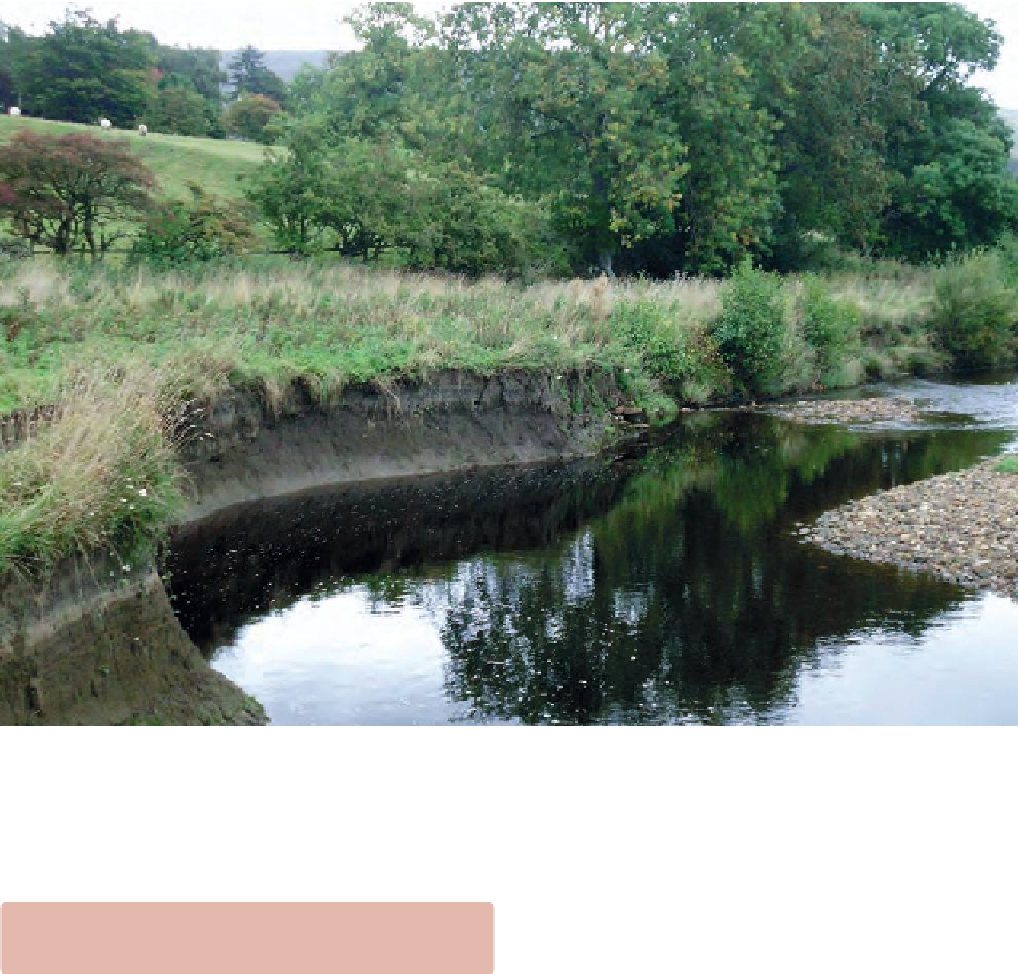Agriculture Reference
In-Depth Information
12
Figure 12.2
Weathering and erosion by water. Note that the faster moving water on the outside of the bend
removes soil and rocks (weathering) and carries these until the water slows down (erosion). The larger stones
that were carried downstream when the stream was in spate are left on the inside of the bend where the water
is moving more slowly. Note the meandering stream has cut into the alluvial soil deposited across the valley
fl oor in earlier times
Heat
. Also in hotter regions, rock is broken down
as they are heated up in the sun. The rock surface
expands while being attached to cooler rocks setting
up strains within the material. This leads to surfaces
breaking away; the 'onion skin effect'.
Frost
.
In temperate areas, it is the action of frost that
does much of the weathering. Water that gets into
any cracks or when taken up in porous rocks such
as chalks and limestones expands when it freezes.
The pressures set up to accommodate the expanded
water cracks the rock and, like the same effect on
frozen pipes, the thaw reveals the damage done.
Glaciers
. Ice in a glacier tends to stick to the
adjacent rock, but as the glacier moves downhill,
the enormous forces involved pluck rock away and
gradually the glacier becomes a huge mix of rock
debris and ice. As this moves downhill, the large
rocks embedded in the ice scour away the rock with
which it comes into contact; the 'scrubbing brush'
action.
Erosion
is the movement of rock fragments and
soil.
Physical weathering
Water
.
Moving water, whether in streams, rivers or
the sea, is able to carry particles in it and the faster it
moves, the more it can carry. This leads to the rocks it
flows over being abraded. As the speed of the water
increases it is able to carry disproportionally more
both in total quantity and in size; large boulders can be
bounced along in water that is in spate. It is at these
times when most of the scouring of rock occurs,
producing large quantities of debris which is further
ground up in the moving water (Figure 12.2).
Wind
.
In a similar way, the wind carries abrasive
particles that 'sandblast' exposed rock; typically this
happens in hot dry climates where sand particles are
readily picked up.


